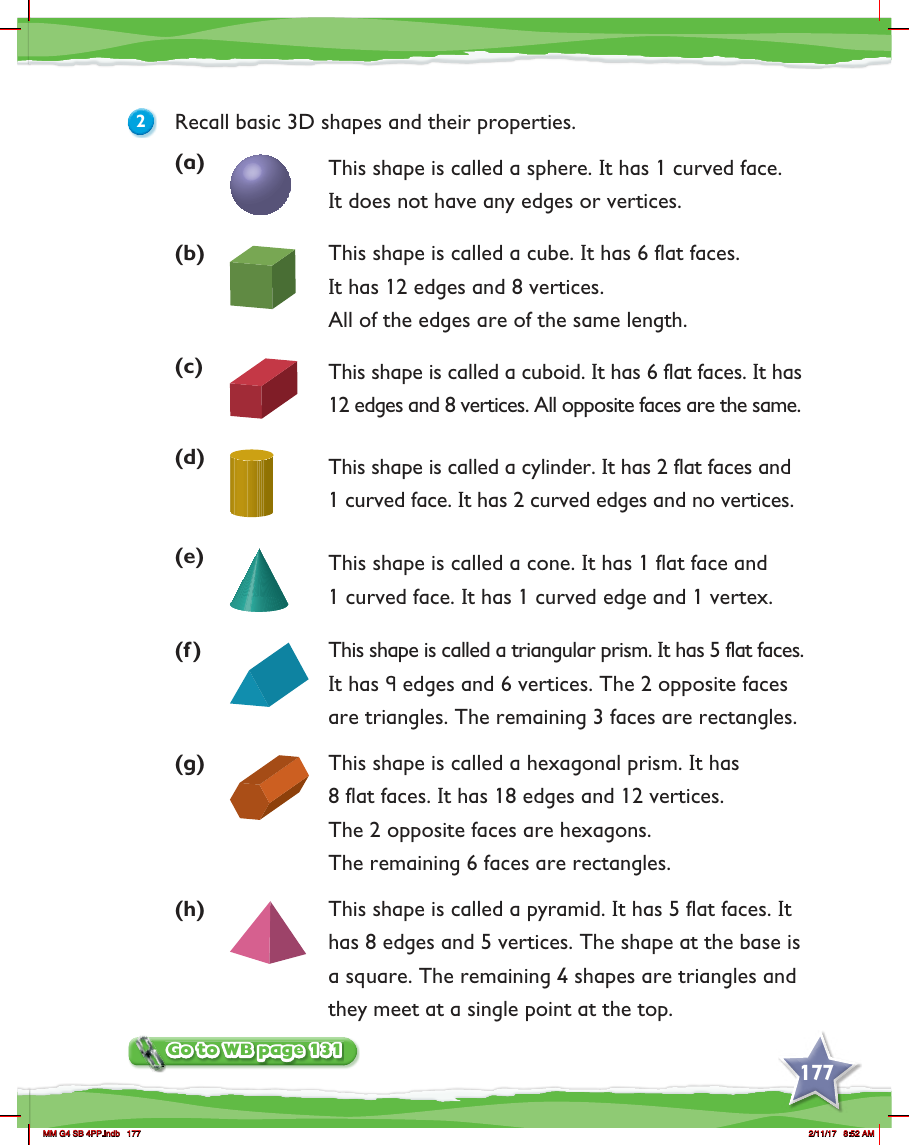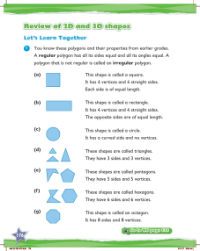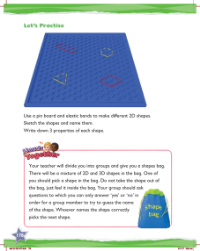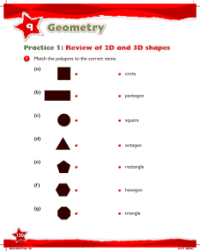Max Maths, Year 4, Learn together, Review of 2D and 3D shapes (2)

Maths Resource Description
In Year 4 mathematics, students review their knowledge of basic three-dimensional shapes and their distinct properties. For instance, a sphere is a simple 3D object with one continuous curved surface, lacking any edges or vertices, resembling a ball. Conversely, a cube is a solid figure characterised by its six flat faces, each forming a perfect square. It is defined by its 12 edges, which are all of equal length, and its 8 vertices, or corners, where the edges meet.
Another common 3D shape is the cuboid, similar to a cube but with rectangular faces. Like a cube, it has 6 faces, 12 edges, and 8 vertices, with each pair of opposite faces being identical. A cylinder is easily recognised by its 2 flat circular faces and 1 curved surface, with 2 curved edges and no sharp vertices. The cone, on the other hand, has a single flat face in a circular shape, a pointed vertex, and a curved surface that tapers to the point. The triangular prism is a polyhedron with 5 flat faces, including two triangular ones opposite each other and three rectangular sides, having 9 edges and 6 vertices. The hexagonal prism extends this concept with 8 flat faces, including two hexagonal ones and six rectangular lateral faces, 18 edges, and 12 vertices. Lastly, the pyramid stands out with a square base and 4 triangular faces that converge at a single vertex, totalling 5 faces, 8 edges, and 5 vertices.



